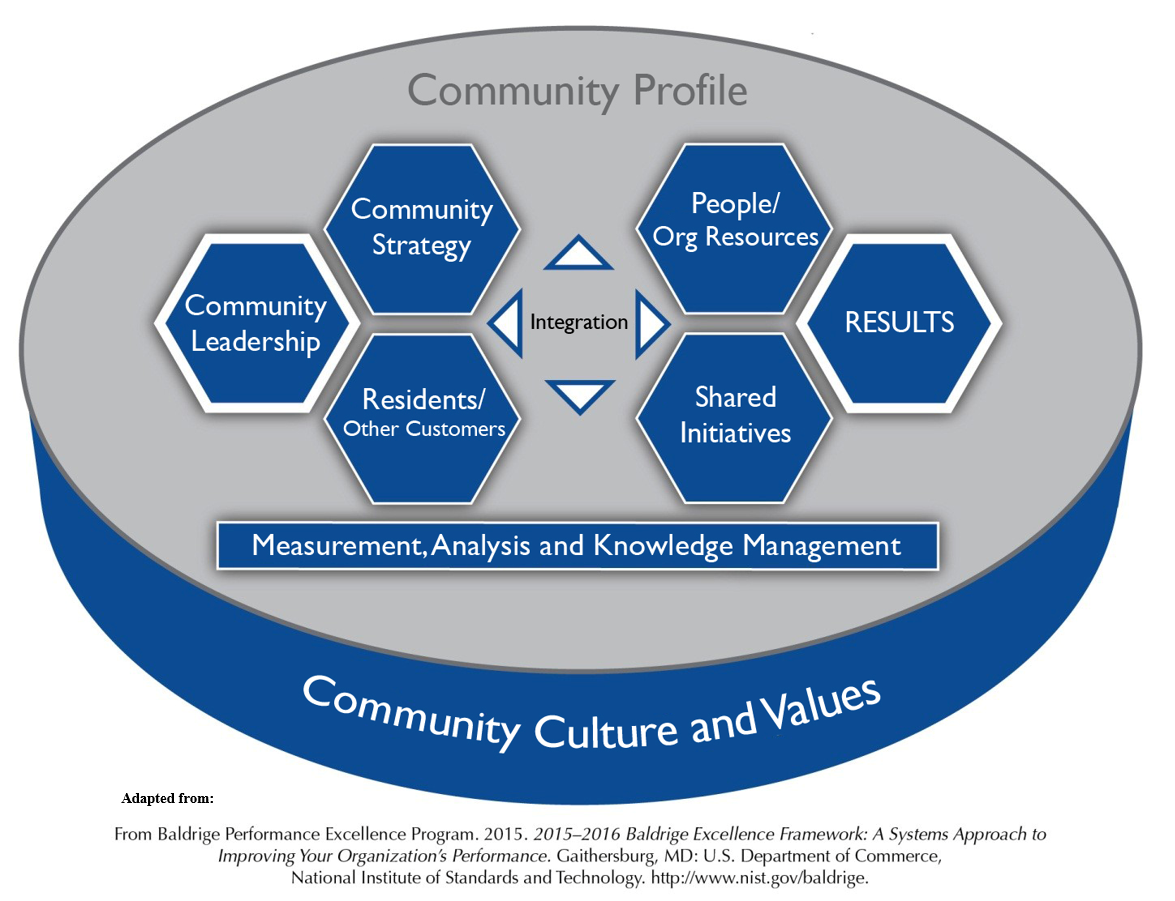
This past Tuesday we kicked off the first online Learning Collaborative session of 2018 with an “Introduction to Community Strategic Planning”. This was the first time that all ten of our communities were together for an online session and COE 2026’s first opportunity to formally introduce Category Two of the Communities of Excellence Framework to our participants.
A key difference between Category Two-Strategy in the Baldrige framework and Category Two in the Communities of Excellence Framework is the addition of Community. Every community has a system, whether it’s a good one or not. In Category Two, Community Strategy, we are talking about planning in the context of the overall system; how you move a community from its current state to its desired future state (Vision). Category Two helps your community to identify and allocate community resources and align your community offerings with its mission, and its action plans with its strategy. Simply put, this journey is very much about identifying your community’s current state and then improving it.
In the session we heard presentations from two of our communities on their strategic planning processes: Kanawha County, West Virginia and San Diego South Region. In Kanawha County, they use a systematic, repeatable process to identify key health issues in the community, incorporate data from multiple sources and then, at a community forum every three years, vote on the three issues that they will focus on using a scoring process of a number of factors. In San Diego’ South Region they use a five step planning process that starts with reviewing their current state including data from the region, conducting environmental scans of their partner organizations, and then defining their areas of focus and goals.
One important recognition that came out of this session for me regards the diversity of challenges, resources, backbone organizations and Baldrige experience that we have with our ten communities. Some of our communities function in a much more complex system or have more resources available to them than others. One of the challenges of COE 2026 will be to learn how most effectively to teach our process to these differing communities no matter where they are in their journey. It a challenge that the faculty and I recognize and must learn to address in order to fully represent the broad diversity of communities across this country. This is a learning collaborative – we are learning from our communities, as they learn from us. We need everyone’s help to make this the best it can be and we welcome your thoughts along the way as we learn to tackle these complex issues.

